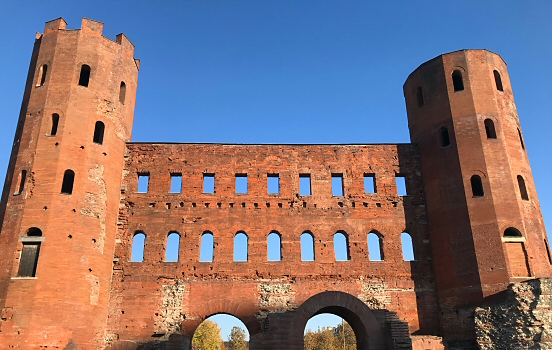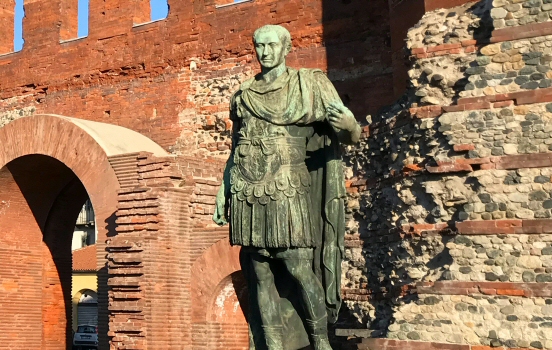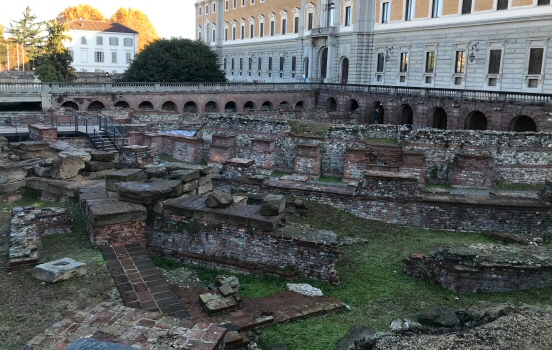Many cities are associated with a landmark location. The Eiffel Tower is the symbol of Paris and the Statue of Liberty is forever connected to New York city. Then there are some cities where the references are less than clear.
What about Turin? Once the royal capital of a kingdom that barely exists in memory, the city of today is a lot more humble. This region gave us Fiat and espresso, vermouth and truffles. It also gave us the lingering sense that civilization might’ve peaked somewhere around 1969, with a sharply tailored suit and a glass of Campari.
At least that’s an image stuck on my mind, because of a certain movie. The Italian Job is a movie from 1969 where Michael Caine and his merry British band perform a daring heist with ensuing car chase all over central Turin. I walk across Piazza San Carlo, a large square with a horse guy in the middle. One of the most famous scenes in the movie is the “chicken grab” scene, taking place in the archway flanking the square.
But that movie is over 50 years old (skip the poor remake from 2003), so a younger generation may think of other things. Such as chocolate and white truffle. I grab some Gianduia at the popular chocolate store La Bottega Guido Gobino and walk through the arcades, lined by beautiful Baroque buildings.
I continue north to the cathedral of San Giovanni Battista, which holds the Shroud of Turin. This is arguably the poster boy of the city. Even though there are no historical records of the shroud prior to the 14th century, and examinations in the form of radiocarbon dating, this is still one of the most controversial pieces of fabric on Earth. Is it the burial cloth of Christ or a medieval Photoshop job? Doesn’t matter, people will revere it anyway. It’s so popular that the studies of the shroud has its own word: sindonology.
 Porta Palatina.
Porta Palatina.
Next to the cathedral is the Parco Archeologico Torri Palatine, an area with old Roman ruins. But unlike Forum Romanum in Rome, where you have to pay for a ticket and queue for hours before getting in, this area is both free and empty.
I stepped across the beaten grass along muddy paths, while a dog owner was walking his four-legged friend who unashamedly urinated on top of a two-thousand year old wall ruin.
 Julius Caesar is still keeping an eye on things.
Julius Caesar is still keeping an eye on things.
At the far end is the Porta Palatina, said to be the best preserved Roman Gateway in the world from the 1st century. It is flanked by statues of Caesar and Augustus, and I wonder what they would have said of the derelict state of the buildings.
As I walk through the totally unprotected gateway, past ugly graffiti and empty beer cans, I wonder why such an archeological treasure is kept unprotected from weather, wind and the general public (and their dogs).
The area is also split in two by a railroad for trams. The Roman amphitheatre (Area Archeologica del Teatro Romano) is on one side and Porta Palatina on the other.
I’m sure there is some kind of odd explanation behind it, such as the road Via dei Fori Imperiali built by Mussolini that cuts straight through the Forum Romanum ruins in Rome, but I still feel sad for the devastation of history as exhaust fumes and vibrations continue to damage the surrounding ancient Roman monuments.
 The Roman amphitheatre.
The Roman amphitheatre.
I decide to escape the cold weather and coal-drenched smog by going into the classic Caffè Fiorio and order a Bicerin, the traditional coffee&chocolate hot drink native to Turin since 1763. Perhaps it’s time for a chicken grab somewhere?

Comments
No comments yet.
Leave a reply